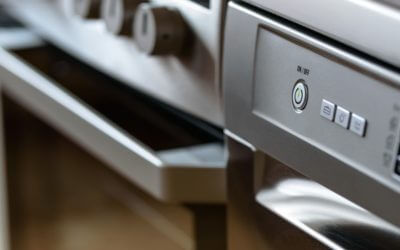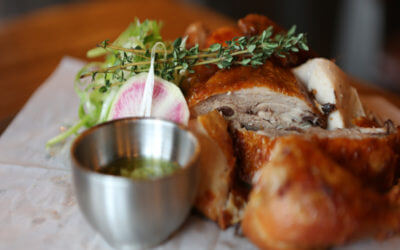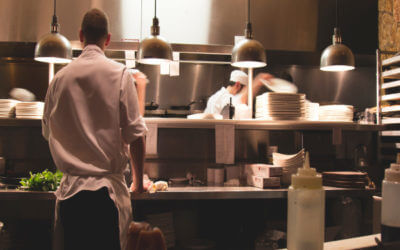6 Equipment Buying Tips Every Restaurant Owner Needs to Know
July 8, 2017If you own a restaurant, knowing how to purchase the right equipment is one of the key ingredients to the success of your company. Here’s a bit of advice to help you become a purchasing pro:
Our 6 Restaurant Equipment Buying Tips
1. Consider your current situation and plans for expansion. When purchasing restaurant equipment, consider not only the current size of your kitchen, but also any plans to grow in the future. What you currently need and what your present space can accommodate may be different than what you will need later; a larger or more upscale model may be in order.
Make a list of your current restaurant equipment needs, and note alongside it what you may need later on. Another thing to think about while you write your list is your current menu and any changes you might make to your menu. Consider all the cooking tools you might need to cook your current and future menu items. Try to leave room for new ideas.
2. Make a budget. Have a good look at your finances and decide how much money you can allocate to each aspect of your business. How much money do you plan to spend on your restaurant equpiment? Keep in mind that if you are a new business owner you should be very aware of your budget, as this can quickly make or break your business.
Although you may save money by purchasing more advanced equipment right away, some purchases and upgrades might be best left to when you are making more profits.
3. Find the balance between high quality and an affordable price. If only we had an unlimited pocketbook, we would all choose top-of-the-line restaurant equipment. However, we must keep our budget in mind. Choose quality equipment but be mindful of the cost.
Remember, the cost of restaurant equipment is not just in the price tag. For one, high-quality equipment will help you create better food. Certain equipment, especially heat-producing items like ovens, can use a lot of energy, so energy efficiency is an important consideration. Good equipment also last longer as a rule and cost you less in maintenance and repairs. In many cases, you really save money when you buy a better-quality piece of equipment.
4. Ensure compliance. The first thing you should do before buying any restaurant equipment is to check all government regulations, including building, health, fire and other local codes. When making your purchases, ensure the equipment meets all the codes. Remember, inspectors will likely check your equipment when they visit your restaurant. You don’t want to waste money on replacing a new purchase that’s not up to code!
5. Buy something efficient and practical. Ensure the restaurant equipment you buy is easy to use, clean and maintain. Consider the amount of time it will take to train your staff to use the equipment, and how much time cleaning and upkeep will take
6. Consider the warranty and post-purchase service. Be sure to ask if there is a warranty for the restaurant equipment you’re thinking of buying, as well as what is covered under that warranty. If you’re buying a model you haven’t used before, some companies offer training on installation and use, so inquire about this as well.
What’s in a Cooking Pot, How to Choose the Right One?
As a restaurant owner, your cooking needs might vary. Did you know that a good quality pot can greatly improve your cooking experience, while also improving the quality of your cooking? This cooking equipment is a very important one that cannot be done away with...
5 Things Every Restaurant Owner Should Do Before Buying Used Kitchen Equipment
Equipping your restaurant properly can cost a lot of money, so buying used kitchen equipment is the go-to choice for many restaurateurs. Buying used kitchen equipment for a restaurant is a bit different than buying used equipment for your home, however. You will...
Top Restaurant Technology Trends in 2018
When looking to buy restaurant supplies, you want to be on the leading edge of technology trends. This will keep your kitchen running smoothly. Let’s take a look at some of the most recent trends in restaurant supplies technology. 1. New Payment Options Who would...
5 Different Ice Shapes and Why You Should Care About Them
Ice makers are very popular in the restaurant and foodservice community because they eliminate the need to buy ice every day. And of course, adding an ice maker to your collection of foodservice equipment means you will always have ice on hand when you need it. An...
Pulping and Grinding: A Starter’s Guide to Reducing Commercial Food Waste Costs
For most restaurant owners and managers, the expenses involved in making meals are always under careful consideration. Water is needed to prepare, cook and wash food; power is necessary for food prep, cooking and cooling, and so on. However, how many of us consider...
Choosing the Right Milk Cooler: Cold Wall or Forced Air?
In a restaurant, milk is an essential to have on hand for coffee and other café-style beverages, for serving with kids’ meals, and as a key ingredient in many recipes. Keeping your milk properly chilled can be difficult without the proper restaurant equipment....
How to Choose Your Next Commercial Meat Smoker
The movies that connect with us on a personal level are the ones that linger in our memories forever. Anyone who has used a commercial meat smoker knows that they have a huge influence on the taste of a meal. You need to have just the right kitchen equipment to get a...
Are High Speed Ovens Too Good to be True?
You might have heard a few of the bold claims that foodservice equipment manufacturers have been making about high speed ovens, but they can’t be possible, right? Cooking three times as faster as regular ovens? Five times as fast? Fifteen times as fast? It may seem...
Choosing the Right Food Storage Containers for Your Restaurant
Choosing the right kitchen supplies will make a difference in your restaurant. Whether it is heavy duty kitchen equipment or food storage containers, each piece of equipment plays its own important role. Today, we are going to talk about how to choose the right food...
Tipton’s Guide to Perfect Poultry Trussing
Do you ever truss birds in your commercial kitchen? Trussing is a fantastic cooking technique because it makes poultry cook faster, look more attractive and taste better. If your commercial kitchen prepares poultry, you don’t want to miss these trussing tips. Trussing...
How to Eliminate Excess Condensation in Your Kitchen
Is your commercial kitchen getting steamy? If so, you could have more than just an uncomfortable working environment on your hands. Excess moisture in your commercial kitchen can result in the corrosion of equipment, the development of mold, and even damage to your...
The DIY Guide to Your Restaurant’s Own Garden
Stocking your restaurant supply with your own home-grown herbs and produce can truly bring your dishes to life. When it comes to food, everyone knows there’s nothing like homemade and home-grown. Having your own culinary garden, however large or small, can help you...
5 Reasons a Meat Grinder Will Set Your Burgers Apart
The more you do to prepare your foods in-house with the right kitchen equipment, the fresher and more flavorful your dishes become. There are all sorts of restaurants offering fast-food style burgers, but some diners are looking for the real deal. A fresh, juicy...
Pest Preventions to Implement in Your Commercial Kitchen
Restaurant pests: it’s something that few people want to think about. Like it or not, pest management is an essential consideration for every commercial kitchen. Offering food, shelter and water, the unprepared commercial kitchen naturally provides everything pests...
Choosing the Right Material for Your Cooking Equipment
Kitchens are very unique to their chef. Just like a car mechanic has a toolbox unique to them, so is the cooking equipment in a kitchen. And over time, the same cooking equipment become a natural extension of the chef. What tools are you using in your kitchen? It...















